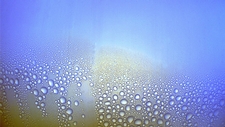Physical States of Matter
Readiness

TEKS Objective
Students will classify matter based on physical properties, including mass, magnetism, physical state (solid, liquid, and gas), relative density (sinking and floating), solubility in water, and the ability to conduct or insulate thermal energy or electric energy.
Essential Understanding
The student knows that (1) matter has measurable physical properties and (2) those properties determine how matter is classified, changed and used.
Science Background
Introduction to Matter: Chem4Kids.com (website) - Refresh your high school or university knowledge about the states of matter with this user-friendly website.
Introduction to Matter
Chem4Kids, www.chem4kids.com
Matter Under the Microscope: Chem1 (website) - Discussion of the properties that differentiate solids, liquids and gases, and an explanation of how matter’s visible properties are defined by the microscopic particles of which it is composed.
Signature Lesson
Properties of Matter: Pennsylvania Department of Education (website) - Students make observations to differentiate between solids, liquids, and gases.
Properties of Matter
Pennsylvania Department of Education, www.pdesas.org
- Supporting Lessons
- Extensions
- Assessment Ideas
- Literature Connections
- Related
TEKS - Additional Resources
Supporting Lessons
Gases Matter: BioEd Online (website) - In this activity introducing the basic properties of gases, students create carbon dioxide from baking soda and vinegar.
Gases Matter
BioEd Online, www.bioedonline.org
What Makes Water Special: BioEd Online (website) - Students investigate different properties of water and oil and make observations about liquids.
Elaboration Lessons and Extensions
Solid, Liquid or Gas? Science and Mathematics Initiative for Learning Enhancement (website) - Students observe several types of matter and attempt to classify them based on their knowledge of solids, liquids and gases.
A Crazy Colloid (Goo Yuck): AIMS Education Foundation (PDF) - Students investigate a substance made from cornstarch and water, using a number of tests to decide whether it is a solid or liquid.
A Crazy Colloid (Goo Yuck)
AIMS Education Foundation, www.gemsclub.org
Assessment Ideas
Properties of Matter, Formative Assessment: Pennsylvania Department of Education (website) - Activity on the states of matter that includes assessment ideas.
Literature Connections
Bartholomew and the Oobleck Dr. Seuss (ISBN-13: 978-0394800752)
Solid, Liquid, or Gas? Hewitt, Sally (ISBN-13: 978-0516263939)
Solids and Liquids. Glover, David (ISBN-13: 978-0753455135)
Solids, Liquids, Gases. Simon, Charnan (ISBN-13: 978-0756509767)
Additional Resources
States of Matter: Super Teacher Ideas (website) - Lessons, activities and demonstrations related to matter.
States of Matter
Super Teacher Ideas, www.superteacherideas.com
TEKS Navigation
Grade 5
User Information
Not Registered Yet?
Sign Up Today!
Need Assistance?
If you need help or have a question please use the links below to help resolve your problem.

Comments